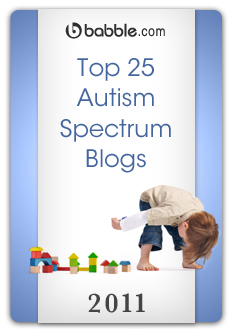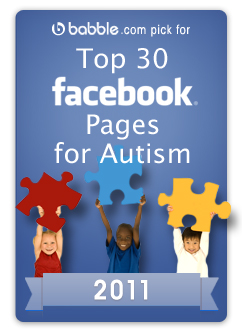My son’s 6th birthday was the first birthday that involved friends from school, not just cousins and other family members. This meant that there would be other children there with varying severity levels of Autism as well as some children that had no special needs at all.
This presented a unique problem. How do you keep excitement up and keep it under check at the same time?
The Location
The first challenge was the location. Cameron wanted his birthday at home where he’s comfortable, all of his toys and games are and he can feel like people have to come to him. That’s actually pretty important.
However, it’s not very practical. First, our house is not that large and it’s not that clean. Cleaning it before hand and afterwards as well is a daunting task on top of the rest of the preparations… and if anyone decides that they’re not in a rush to get home, we’re stuck with them. Not that we mind, we love them all dearly… right?
It turns out that in town, there is a very large park with a playground, water park area and lots of land to play around in… but it’s always crowded. That wasn’t a very good choice either but, outside of town, there was an identical park only smaller and it was along side a lake, which meant beach area. So, playground, water park, some space to play in but not as much and a beach… to top it all off, literally, near the water’s edge but not too close was a roofed in area where we could sit, organize and even play. This little area was surrounded by three picnic tables.
Best of all? The park is almost always empty, or close to it. Being outside of town, it was rarely used… even on hot days.When we got there to set up, there was only 3 other people in the entire park.
The Food
Being that there were special diets for some, not for others and pretty much everyone had things to do on their own, my wife planned the party to run from 1pm to 3pm. This meant that people could eat lunch, come to the party and be home before dinner.
Some people always tend to miss out, or get a bit hungry while there, she made sure to bring a couple of containers with grapes, strawberries, cheese, gluten free crackers, a bit of lunch meat and some chips. Not all of it was eaten but quite a few people did snack so it worked out perfect.
As for the cake… she made a small’ish cake the week before, as it was the first cake she had ever baked. She bought the ingredients and mixed it and made it herself, first time ever. And not just that, it was gluten free… even the icing.
So it went well but not perfect but that’s why she did it… to practice. Then, the day before the party, she made two of those cakes, put them side by side, iced it all and put on some decorations.
For the actual design, she used Photoshop to put together a very nice design with Cameron’s favourite Mario characters, printed it at Walmart, had a bakery print it onto edible rice paper and stuck it on top of the cake. Presto… a very lovely, very yummy looking cake. It was perfect.
The Games
We had one child that preferred to be on his own although we did catch him playing one on one with another child for a little while, some children were all over the place and from time to time, some children needed a little alone time.
This can make organizing games very difficult and we even had one adult at the party ask us why there were no games.
Here’s the thing… at a park that has a beach, water park, playground and lots of room to run around.. you don’t need games. You can have a few children racing to the playground and back, a couple others playing tag and a couple others playing cars at a table. Everyone’s happy!
Did any of them miss games? Were they upset they didn’t get to pin a tail on a donkey? Not in the slightest.
Cake and Presents
This turned out to be quite tricky but for the most part, the adults all backed up and let the other children crowd Cameron as he opened his presents. They all got to sit at the table to eat cake and they all got to stand up at the table and hover over Cameron as he opened presents.
We were a little concerned that Cameron might feel anxious about it but he never did and the other children really loved that they could get the best look possible. It meant for some tricky positioning to get the photos I wanted and from time to time, we had to ensure that they didn’t start getting in each other’s way or pushing but for the most part, children do remarkably well when given a little freedom.
Coming to an End
After the cake and presents, it was quite amazing to see as one child wandered off to a bench to stare at the lake, 2 other children went to another part of the park to see ducks in the lake, 1 child went off to the waterpark, 2 to the playground and the rest into the roofed in area to play with some new toys.
They all had different ideas of what to do and some needed some space, some didn’t… the adults were able to clean up a bit and talk… it was perfect.
This meant that the children were all able to cope well with going home and hopefully even do well that evening since they were able to release some anxiety and stress on their own, on their own terms.
If we had the party in our house, that would not have been possible.
It was at this point that some adults began to question what was happening, why one child was on his own, why we let them all go off… and no, it’s not frustrating having to explain.
It was actually a perfect example and a great opportunity to explain one of the more important aspects to Autism… letting the children have their freedom. Despite their age, we have to respect that they know exactly what they’re doing. They know what they need.
That Evening
As Cameron opened his presents to play with, he really had no problem at all sharing with his little brother. Much to our dismay, as well as Cameron’s, his little brother proceeded to break toy after toy… after toy.
Personally, I’d have been furious but not my Cameron. He took them away from his little brother but he’d tell him that it’s ok, it was an accident and move on to something else.
He was completely understanding and calm the whole time.
To me, that’s a true testament to many things, including what a great kid he is but also to what a huge success his birthday party was.
Such a huge day, in a big park, with a hot sun, with lots of friends, lots of sugar, exciting presents and so much more and even when faced with what should have been meltdown inducing on many levels, he was calm and happy.
Today is the day after and while we have a strict “no video games first thing in the morning” rule here, I was more than happy to let him play one of his new video games when he got up for being such a super trooper the whole time the day before.
He earned it.
And to my wife, it couldn’t have been any more perfect.
















